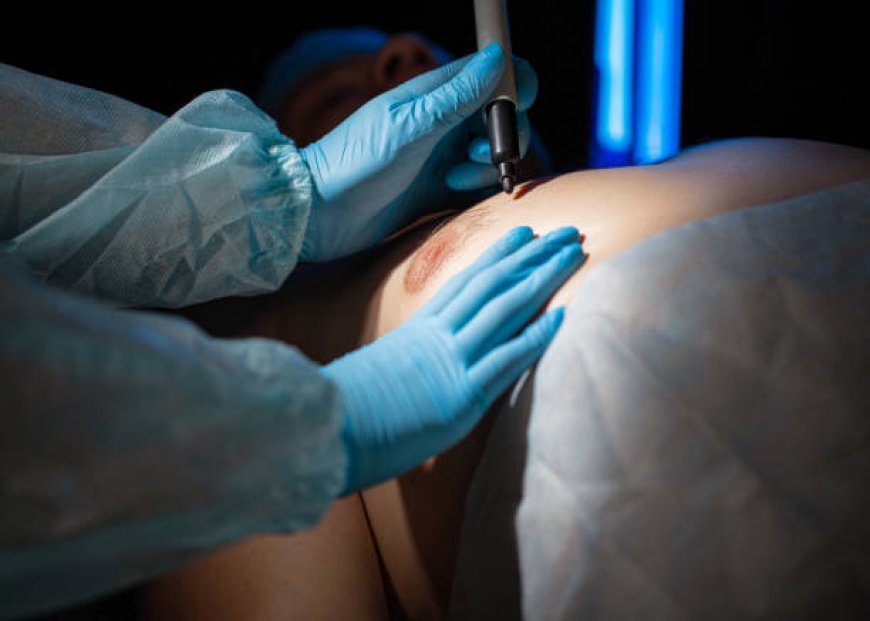Al Ain's Gynecomastia Epidemic: Unveiling the Truth
Discover effective solutions for Gynecomastia in Al Ain. Expert insights, tips, and treatments to redefine masculinity and restore confidence.

In recent years, Al Ain has witnessed a concerning rise in cases of gynecomastia, a condition characterized by the enlargement of male breast tissue. This article aims to shed light on the factors contributing to this epidemic, explore the available treatment options, and provide answers to frequently asked questions, offering hope and guidance to those affected.
Understanding the Gynecomastia Epidemic
What is Gynecomastia?
Gynecomastia is a medical condition characterized by the abnormal enlargement of breast tissue in males. It can occur at any age and is often associated with hormonal imbalances.
The Rise in Gynecomastia Cases in Al Ain
Several factors may contribute to the surge in gynecomastia in Al Ain cases:
- Environmental Factors: Exposure to endocrine-disrupting chemicals in the environment, such as certain pesticides and plastics, may disrupt hormone balance and contribute to gynecomastia.
- Lifestyle Changes: Sedentary lifestyles, poor dietary habits, and increasing rates of obesity may also play a role in the development of gynecomastia.
- Awareness and Diagnosis: Greater awareness of gynecomastia among healthcare providers and improved diagnostic techniques may lead to more accurate identification and reporting of cases.
Exploring Treatment Options for Gynecomastia in Al Ain
1. Lifestyle Modifications and Observation
In mild cases of gynecomastia, lifestyle changes and observation may suffice:
- Weight Management: Adopting a healthy diet and engaging in regular exercise to achieve and maintain a healthy weight may help reduce the appearance of gynecomastia.
- Monitoring: In cases where gynecomastia is caused by hormonal fluctuations during puberty, a "watch-and-wait" approach may be appropriate as the condition often resolves on its own over time.
2. Medical Interventions
For more severe or persistent cases, medical interventions may be necessary:
Hormonal Therapy
- Testosterone Replacement Therapy (TRT): In individuals with low testosterone levels contributing to gynecomastia, TRT may help restore hormone balance and reduce breast tissue enlargement.
- Selective Estrogen Receptor Modulators (SERMs): Medications like tamoxifen can block estrogen receptors and prevent breast tissue growth in individuals with gynecomastia.
Surgical Procedures
When conservative treatments fail to produce satisfactory results, surgical options may be considered:
- Liposuction: Removes excess fat from the breast area to improve contour and reduce breast size.
- Mastectomy: Surgically removes glandular breast tissue to achieve a flatter chest appearance.
- Combination Procedures: Liposuction combined with mastectomy may be recommended for optimal aesthetic outcomes in certain cases.
Accessing Treatment in Al Ain
Al Ain offers a range of healthcare facilities equipped to diagnose and treat gynecomastia. It's essential to consult with a qualified healthcare provider who specializes in the management of gynecomastia to explore treatment options tailored to individual needs and preferences.
Frequently Asked Questions (FAQs) about Gynecomastia
Q1: Is gynecomastia surgery safe?
A1: Yes, gynecomastia surgery is generally safe when performed by a qualified and experienced plastic surgeon. However, like any surgical procedure, it carries some risks, including bleeding, infection, and changes in nipple sensation.
Q2: Will gynecomastia come back after surgery?
A2: In most cases, gynecomastia surgery provides long-lasting results. However, factors such as weight gain, hormonal imbalances, or certain medications may cause gynecomastia to recur.
Q3: How long is the recovery period after gynecomastia surgery?
A3: The recovery period varies depending on the type of procedure performed. Generally, patients can expect some swelling and discomfort for a few weeks following surgery, with full recovery within a few months.
Q4: Can gynecomastia be treated without surgery?
A4: Yes, mild cases of gynecomastia may respond to hormonal therapy or lifestyle changes. However, for significant or persistent gynecomastia, surgical intervention may be necessary to achieve optimal results.
Q5: How do I choose the right healthcare provider for gynecomastia treatment in Al Ain?
A5: When selecting a healthcare provider for gynecomastia treatment, consider factors such as their experience, credentials, and patient reviews. It's essential to consult with a board-certified plastic surgeon who specializes in treating gynecomastia and has a track record of successful outcomes.
Conclusion
The gynecomastia epidemic in Al Ain presents a significant health challenge, but effective treatment options are available. By understanding the factors contributing to this epidemic and exploring the available treatment modalities, individuals can take proactive steps towards finding relief and regaining confidence in their appearance. For personalized treatment and compassionate care, consult with a qualified healthcare provider in Al Ain.
What's Your Reaction?
 Like
0
Like
0
 Dislike
0
Dislike
0
 Love
0
Love
0
 Funny
0
Funny
0
 Angry
0
Angry
0
 Sad
0
Sad
0
 Wow
0
Wow
0





















































